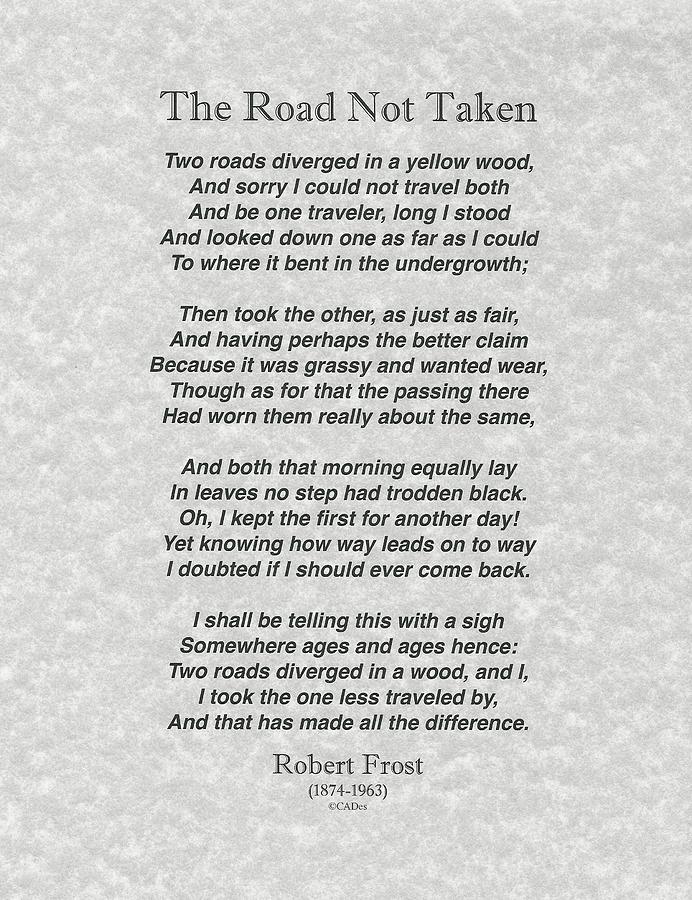


This is seen in lines five through eight: “My little horse must think it queer/ to stop without a farmhouse near/ between the woods and frozen lake/ the darkest evening of the year/.” The speaker continues to question if he/she should stay and admire the beautiful scenery, or continue on his long journey back to his obligations. The uneven rhyme scheme of the first three stanzas embodies the speaker’s scattered thoughts. Frost uses this rhyme scheme to accentuate the main theme of human life and decision making. This pattern is repeated for the next three stanzas and then shifts to a rhyme scheme of “DDDD” in the fourth stanza. The outsider is then carried into the next stanza, adding more uniformity to the poem’s structure. The first, second, and fourth lines of each stanza rhyme, leaving the third line as an outsider. In “Stopping by Woods on a Snowy Evening,” Frost uses a very common, yet powerful rhyme scheme. “Road Not Taken” and “Stopping by Woods on a Snowy Evening” convey a universal theme of making a significant decision in life and moving forward. He specifically manifests this through his connotative language and detailed descriptions of nature.

Frost’s work is exceptionally vivid and emotional. In addition, they capture the reader’s attention by centering around a deeper and more powerful message: life choices. Written in the 1920s, “Road Not Taken” and “Stopping By Woods on a Snowy Evening” focus on the images of our natural environment. We want to hear what you think about this article.Robert Frost is admired not only for his world-renowned poem, “Road Not Taken,” but also for his incredible symbolism and deep interpretation of life through nature. It is now widely considered to be one of the most popular works of American literature. “The Road Not Taken” was originally published in The Atlantic in 1915 along with two other poems from Frost. It’s a commentary on the self-deception we practice when constructing the story of our own lives.” In the final stanza, we can’t know whether the speaker is sighing with contentedness or regret as he justifies the choices he’s made and shapes the narrative of his life.įrost wrote the poem to tease his chronically indecisive friend, Edward Thomas, who misinterpreted the meaning and enlisted in the military shortly thereafter, only to be killed two years later in WWI. In fact, the critic David Orr deemed Frost’s work “the most misread poem in America,” writing in The Paris Review: “This is the kind of claim we make when we want to comfort or blame ourselves by assuming that our current position is the product of our own choices… The poem isn’t a salute to can-do individualism. But as Frost liked to warn his listeners, “You have to be careful of that one it’s a tricky poem-very tricky.” In actuality, the two roads diverging in a yellow wood are “really about the same,” according to Frost, and are equally traveled and quite interchangeable. This interpretation has long been propagated through countless song lyrics, newspaper columns, and graduation speeches. Robert Frost’s poem “The Road Not Taken” is often interpreted as an anthem of individualism and nonconformity, seemingly encouraging readers to take the road less traveled.


 0 kommentar(er)
0 kommentar(er)
